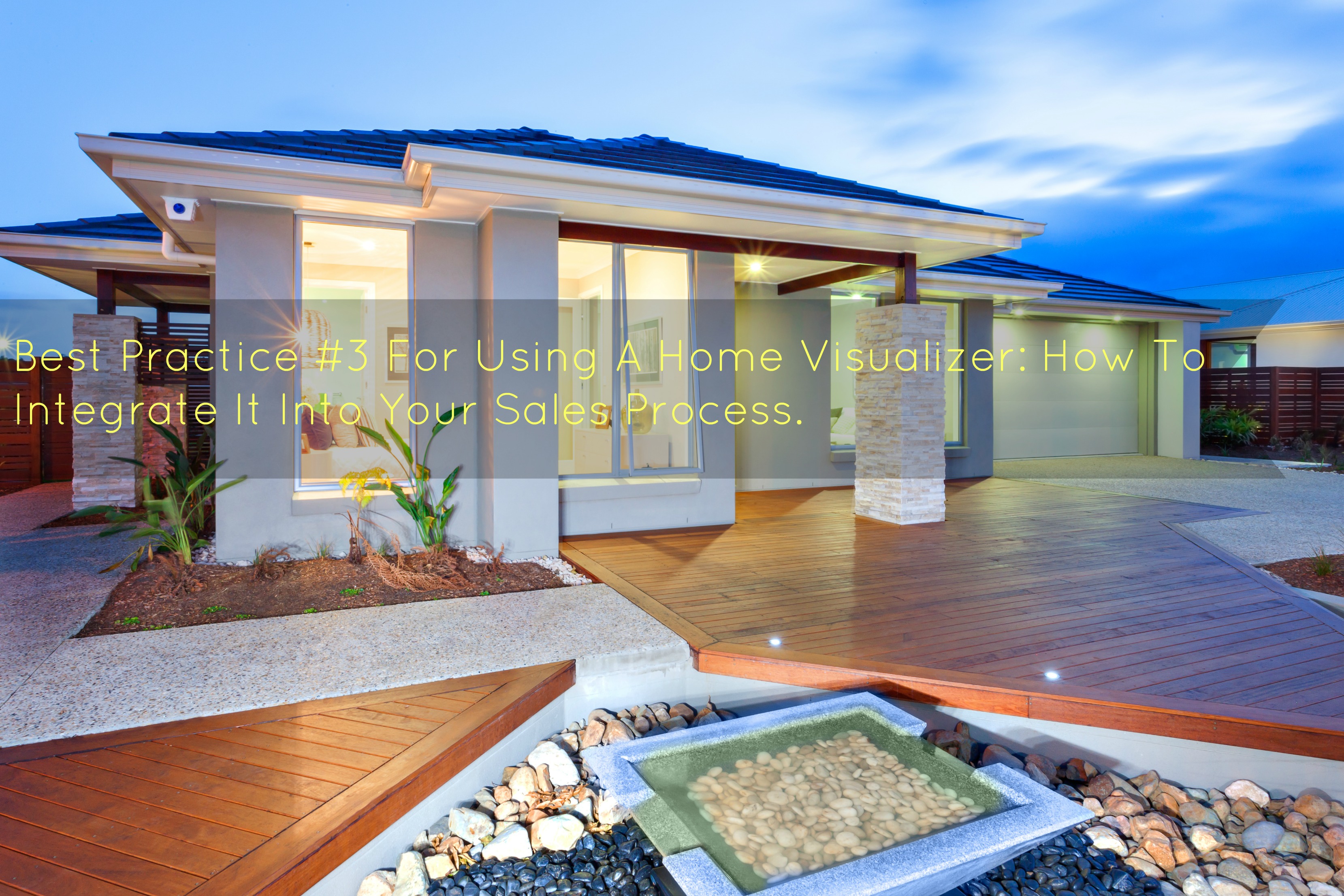How To Integrate It Into Your Sales Process
This is the third in a series of blog posts on best practices for using a visualizer to sell home remodeling projects. Many of the insights in this series are from a free webinar hosted by Renoworks Pro with guest Paul Trautmann. (For a free replay of the webinar, click here)
If you want to increase your home remodeling business, it’s a good idea to find out what already works from companies getting fantastic results. This series of posts focuses on how successful companies have used a visualizer to increase the metrics that matter: sales, referrals, average price per sell, and more.
The first post demonstrated that using a visualizer will make your company stand out in a crowded marketplace. Making it a key part of your company’s identity can change how homeowners perceive your value. When you provide a premium experience, homeowners will pay more for it.
The second post showed the importance of becoming proficient at using a visualizer. It also revealed that it’s easy to become skilled with this tool. You’ll create better designs for your prospects with a few clicks once you have mastered a few basics.
Now we come to the third best practice: how to use it in your sales process.
Not Just One Right Answer
First, it needs to be said that there’s not a ‘one-size-fits-all’ solution here. Integrating a visualizer into your sales process is not hard, but it is something you should think through carefully. Use the ideas and principles below as a starting point and don’t be afraid to experiment. Changing the “way we’ve always done it” can be a catalyst for growth.
Your first option of using a visualizer is to do all the design work ‘on-the-spot’ during an initial meeting with the homeowner. Start by listening to what the prospect wants to accomplish, and then introduce the idea of the visualizer.
“I have some excellent design software here on my laptop (or tablet). It will take be about 5 or 10 minutes, but I can show you how our [product] will look on your home.” Once the homeowner agrees, take a photo of the project space and use it to create a design.
Next, be sure to emphasize that you love feedback on the design; the more engaged the homeowner the better it is. Show them different colors, compare different styles, and get them excited about the process!
This method of doing the design on the spot is particularly appropriate for smaller projects (like replacing an exterior door). This can get you a quick yes on smaller projects.
But what about larger home remodeling projects (for example, a siding project)? You can still use the above option, but here are a few other ideas that work well:
- Start with the same process outlined above, but add this at the end: “Now that you’ve helped me understand what you want, I’d like to go back and create a fully professional design, an accurate quote, and a detailed proposal.”
With this method, you can set a second appointment to go over the details of the design and proposal. Be sure to build in time to get feedback and create changes during this second meeting.
(One other alternative for companies with an office or showroom: invite them there to go over the proposal. This can be particularly effective if you have a nice showroom and the project is a sizeable investment).
- Another option for using a visualizer: turn the initial appointment into a ‘fact-finding mission’ only. Set the expectation that it will be shorter than a full sales presentation. Talk to them long enough to get a feel for what they want, and also get measurements and photos of the project area. You then set a 2nd appointment to go over a detailed proposal with the design you’ll create using the visualizer.
One twist on this method is to have the follow-up meeting online instead of in person. You can do the entire presentation remotely and even close the deal online. (By the way, if this concept of “remote selling” sounds crazy to you, listen to this webinar hosted by Renoworks Pro with guest Mike Damore from OneClickContractor.com. You might just change your mind!).
What Do All Of These Methods Have In Common?
Even though there are several effective ways to integrate a visualizer into your sales process, you’ll note some common best practices:
- Your design is a starting point. You should always build time for feedback and engagement into the process.
- A fully custom design using a visualizer will separate you from other companies. This means you should make it central to how you interact and present yourself to prospects.
- A design will make a strong impression when paired with a professional quote and proposal. It sends the message to the homeowner: “This company has their act together – I can trust them.”
If you’d like to explore how to make a visualizer a key part of your sales process, we suggest scheduling a free demo.
Want even more in-depth information on how a contractor has successfully implemented a visualizer? See the entire webinar with Paul Trautmann by clicking here.
If you are interested discovering more about how you can use a visualizer to increase sales, go here to request a free demo.
